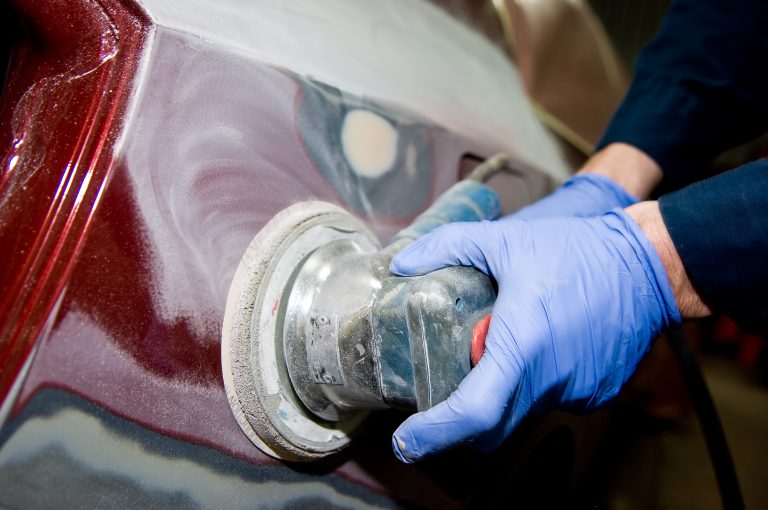Can You Apply Ceramic Coating Over Wax? Expert Insights Revealed
When it comes to protecting your vehicle’s paint, you might wonder if you can apply a ceramic coating over wax. Understanding the best practices for maintaining your car’s exterior is essential for preserving its appearance and resale value.
Ceramic coatings and waxes both serve as protective layers for your vehicle’s paint, but they function differently. It is very important to know that you should not apply ceramic coating over wax, as wax will prevent the ceramic coating from bonding to the paint. This may lead to the coating failing, and you won’t achieve the maximum durability it offers. Instead, ceramic coatings should be applied directly to bare paint, free from any products or contaminants.
Once you’ve applied a ceramic coating, there’s no need to use wax or sealants, as the coating itself provides robust protection. In fact, applying wax on a ceramic coated surface can cause more problems than it solves. Maintain your ceramic coating with routine cleaning and using a SiO2 ceramic booster spray for the best results.
TLDR Summary
Ceramic coatings and waxes serve different purposes for your car’s paint. A ceramic coating offers long-lasting protection and is best applied directly to the paint, while wax provides a temporary barrier yet adds luster and depth to the car’s finish. You should never mix ceramic coatings and waxes; applying them at the same time is a recipe for problems.
When considering whether to apply ceramic coating over wax, it’s essential to understand that doing so is not ideal. To achieve the maximum durability and bonding, a ceramic coating should only be applied to bare paint. If applied over wax, the ceramic coating’s effectiveness will be greatly diminished.
Now, if you’re wondering whether you can apply wax over ceramic coating, the answer is still no. Wax may interfere with the ceramic coating’s performance, reducing its protective qualities and longevity. Instead, invest in a ceramic coating spray sealant, also known as a coating topper or booster, to extend your car’s ceramic coating lifespan.
Remember, preparation is key. Before applying a ceramic coating, always polish your car to ensure the paint is in the best condition possible. This step will also improve the clear coat’s clarity and restore your vehicle’s like-new appearance.
In short, ceramic coatings and waxes should not be combined. Stick to one or the other for optimal results and keep your car looking fabulous.
Ceramic Coating vs Wax
What is Ceramic Coating
Ceramic coating is a technologically advanced method to provide your car with an extra layer of protection. It consists of liquid polymers that chemically bond with your car’s paint, creating a strong, durable layer. This invisible shield not only adds an incredible shine to your car’s surface but also repels water, prevents water spotting, and provides resistance against various contaminants. It even protects your car from harmful UV rays, keeping the finish looking cleaner and better for a longer time than traditional wax.
What’s great about ceramic coating is that it lasts for a longer time and doesn’t need to be reapplied as frequently as regular wax. Keep in mind that ceramic coatings should only be applied to bare paint, free of any waxes or other contaminants.
What is Wax
Wax, on the other hand, has been the traditional method to protect your car’s paint for many years. It is made from natural or synthetic materials, with carnauba wax being a popular natural choice. Wax works by forming a layer over your car’s paint, which provides some protection against contaminants and the elements. It also gives your car a glossy, smooth finish.
The main advantage of wax is that it is easy to apply and affordable. However, it doesn’t last as long as ceramic coatings and needs to be reapplied more often. Additionally, wax might not provide the same level of protection against harmful UV rays and other environmental factors that ceramic coatings offer.
Regarding the application of ceramic coating over wax, it is not recommended as it will prevent the ceramic coating from bonding properly to the paint. This can result in the “failure” of the ceramic coating and reduced durability. If you want to add a layer of protection to your car’s paint, it is advised to remove any wax first before applying a ceramic coating. On the other hand, applying wax on top of a ceramic coating is also not ideal, as waxes and sealants become obsolete once a ceramic coating is in place.
Applying Ceramic Coating Over Wax
Preparation Steps
Before diving into the process of applying ceramic coating over wax, it’s essential to prepare your car properly. To begin, give your car a thorough washing to remove any dirt or contaminants that might interfere with the bond between the coating and the paint. You will want to ensure the car’s surface is clean and dry before starting the application process.
Application Process
When applying ceramic coating over car wax, follow these key steps:
- Remove the existing wax: It’s crucial to remove any existing wax from your car’s surface, as ceramic coating cannot bond properly to a surface with wax on it. To do this, you can use a wax and grease remover, followed by a clay bar treatment to ensure a clean surface.
- Apply the ceramic coating: Once the surface is free from wax, apply the ceramic coating by following the manufacturer’s instructions. This usually involves applying a small amount of coating to an applicator pad, spreading it evenly onto the car’s paint, and allowing it to dry for a few minutes before wiping off excess coating.
- Cure the ceramic coating: Allow the ceramic coating to cure for a specified time, typically around 24 hours, to ensure it forms a durable protective layer with optimal hydrophobic properties. During this time, avoid washing your car or exposing it to rain.
Though you can apply ceramic coating over wax, it is very important to note that you will need to remove the wax first to ensure proper bonding. The ceramic coating creates a clear and protective layer over your car’s paint, providing a hydrophobic barrier against dirt, grime, and other environmental elements. With proper preparation and following these application steps, you can achieve a DIY ceramic coating that effectively protects your car’s surface.
Features and Benefits
Hydrophobic Properties
Ceramic coatings offer an attractive feature called hydrophobic properties. This means that when you apply the coating to your car’s surface, it forms a layer that repels water, making it slide off easily. The result? A cleaner car since water won’t pool on the surface, and you’ll find yourself spending less time drying your vehicle after washing it. It’s a win-win for you and your precious ride.
Durability and Longevity
One huge advantage of ceramic coatings over traditional wax is their durability and longevity. Waxes usually last a few months, whereas a well-applied ceramic coating can last for years. The stronger bond it has with your car’s paint will withstand light abrasions and daily wear and tear better than wax. With ceramic coatings, you can enjoy a longer-lasting shine without the need for constant re-application.
UV Rays and Acid Rain Protection
We all know how harmful UV rays and acid rain can be to your car’s paint, causing fading and damaging the surface. A ceramic coating provides an additional layer of protection against these elements, safeguarding your car from the harmful effects of the sun and corrosive particles in rainwater. It’s like giving your car its own little shield to stand up against the weather.
Self-Cleaning Effect
One of the most appealing aspects of ceramic coatings is the self-cleaning effect. Since these coatings have a smooth and shiny finish, dirt and grime struggle to stick to your car’s surface. This means that your car looks cleaner for longer periods, and when it’s time for a wash, the dirt comes off with less effort. No more spending hours scrubbing stubborn stains, just a simple wash and rinse, and your car is looking its best again.
To sum it up, ceramic coatings offer several benefits over traditional wax. The hydrophobic properties keep your car cleaner, while the durability and longevity save you time and money in the long run. Add in the protection against UV rays and acid rain, and the self-cleaning effect, and it’s easy to see why many car enthusiasts choose ceramic coatings for their automobiles. So, if you want to give your vehicle the best care possible, go ahead and invest in a quality ceramic coating – you won’t regret it.
Drawbacks and Limitations
Scratch Resistance
Although ceramic coatings help protect your vehicle’s paint, they do not provide complete scratch resistance. Swirl marks and light abrasion can still occur on the coated surface. It is very important to continue to take care when washing and drying your car, even after the ceramic coating application.
Maintenance Requirements
Ceramic coatings need to be maintained to preserve their effectiveness and longevity. You will need to regularly wash your car with appropriate car shampoo and use microfiber towels for drying. In addition, you should avoid using waxes on top of the ceramic coating, as they can compromise the coating’s performance.
- To maintain a ceramic coating properly, remember to:
- Wash your car regularly
- Use appropriate car shampoo and microfiber towels
- Avoid applying wax over the ceramic coating
Warranty Issues
When it comes to warranties, ceramic coatings might come with some limitations. Many manufacturers offer warranties for their products, but the coverage and duration can vary. It’s essential to read and understand the terms and conditions of your coating’s warranty. Some factors that could affect your warranty include improper installation, damage caused by negligence, or failure to maintain the coating as recommended.
In summary, while ceramic coatings provide many benefits, including enhanced paint protection and water repellency, there are a few drawbacks and limitations to consider. Be aware of scratch resistance, maintenance requirements, and warranty issues when deciding if ceramic coatings are right for your vehicle. With proper care and attention, you can enjoy the lasting benefits of ceramic coatings for years to come.
Alternatives to Combining Ceramic Coating and Wax
Ceramic Spray Sealant
One great option for protecting your car’s paint without combining ceramic coating and wax is to use a ceramic spray sealant. These products provide a durable, water-repellant layer on your vehicle’s surface, similar to a traditional ceramic coating. The application process is as simple as spraying it on and wiping it off, making it a user-friendly solution. You’ll enjoy the benefits of nano ceramic coatings without worrying about compatibility issues with waxes. Remember, it’s very important to follow the manufacturer’s instructions for best results.
Hybrid Solutions
Another approach to consider is using hybrid solutions. These products combine the benefits of both waxes and ceramic coatings into a single product. With a hybrid solution, you get the sacrificial layer of protection offered by waxes along with the long-lasting and strong bond provided by ceramic coatings. This type of product is an excellent choice if you want the best of both worlds without having to choose between a ceramic coating or wax. Be sure to research the available options and carefully follow the application instructions for optimal performance.
Paint Protection Films
In some cases, you might want to explore using paint protection films as an alternative to ceramic coatings and waxes. These thin, transparent films can be applied directly to your vehicle’s painted surfaces, acting as a barrier against scratches, rock chips, and other potential damage. Paint protection films offer a high level of durability and can be a great long-term solution for maintaining the appearance of your car. Remember to have a professional install these films for a proper fit and adhesion to the surface.
By considering these alternatives to combining ceramic coatings and waxes, you can choose the best approach to protect your car’s paint and keep it looking great for years to come.
Professional Application vs DIY
Choosing Between Professional and DIY Options
When it comes to applying a ceramic coating on your car’s paint, you have two main options: professional application or DIY. Professional application provides a high-quality, long-lasting protective coat, but comes with a higher cost. On the other hand, DIY ceramic coatings can be less expensive and still offer superior hydrophobic properties and shine. To make the best decision for your needs and budget, consider factors such as your experience with paint correction, your available time, and your desired level of protection.
Preparing the Surface for DIY Application
Before applying a DIY ceramic coating, it’s essential to properly prepare your car’s surface. First, you’ll need to wash your car thoroughly, removing any dirt, debris, and contaminants. Make sure to use a microfiber towel to dry your vehicle to avoid any swirls or scratches. Next, perform paint correction using a polishing compound, which will remove any defects and ensure a swirl-free paint surface. Remember that ceramic coatings should not be applied over a wax, as it will prevent the coating from bonding to the paint properly. Once the surface is prepared, you can move on to applying your DIY coating.
DIY Application Tips
When applying a DIY ceramic coating, follow the manufacturer’s instructions closely. You’ll typically be working with a quartz or silicon dioxide (SiO2) based product, which is what provides the protective and hydrophobic properties.
- Ensure that weather conditions are optimal, as extreme temperatures or humidity can affect the curing process.
- Apply the coating using a microfiber towel, carefully covering the entire paint surface, and allow the bonding process to take place.
- After the specified curing time, inspect the surface for any defects, and address any issues if necessary.
By correctly preparing your car’s surface and carefully applying a DIY ceramic coating, you’ll provide a long-lasting, protective layer for your vehicle’s paint. This will help keep it looking shiny and new while saving money compared to professional applications. Remember to re-treat or repair the coating as needed, and follow any specific recommendations for maintenance to ensure the best results.
Important Considerations in Combining Ceramic Coating and Wax
Surface Preparation and Decontamination
Before you consider applying a ceramic coating over wax, it’s very important to prepare the surface. Begin with decontaminating the painted surface. Decontamination can include the removal of bird droppings, tree sap, industrial fallout, brake dust, and other harmful contaminants. Proper decontamination is essential for ensuring the longevity of your vehicle’s finish and helping it maintain clarity.
Make sure the surface is clean and free of dust, grease, or oil. Use a clay bar or other decontamination product to remove any remaining contaminants from the clear coat. This will provide you with the cleanest surface possible and allow the ceramic coating to bond more effectively.
Compatibility and Bonding with Waxes
To optimize durability, it’s best not to apply a ceramic coating over an existing wax layer. Doing so can prevent the coating from bonding properly to the painted surface, which will reduce its lifespan. Instead, apply the ceramic coating directly to the bare paint. Applying a wax on top of the ceramic coating is possible, but it’s not always recommended because it can reduce the effectiveness of the hydrophobic properties of the coating.
Remember that combining ceramic coatings with other products like sealants and hybrid solutions is not advised. Mixing them can lead to undesirable results that may compromise the finish on your vehicle.
Maintaining the Combined Finish
After you’ve applied the ceramic coating, regular maintenance is essential to make the finish last as long as possible. Keep your vehicle clean and free of debris to help preserve the hydrophobic qualities of the ceramic coating. Make sure to wash your car regularly, using a pH-neutral car wash soap to avoid damaging the coating. Regular maintenance will also help to maintain the water-beading characteristics of the ceramic coating.
When you maintain the combined finish of ceramic coating and wax, you can enjoy the benefits of both products. Ceramic coatings offer excellent protection and durability, while waxes can enhance the appearance of your vehicle’s paint. Just remember to properly prepare the surface, adhere to compatibility guidelines, and maintain the finish for optimal results.




